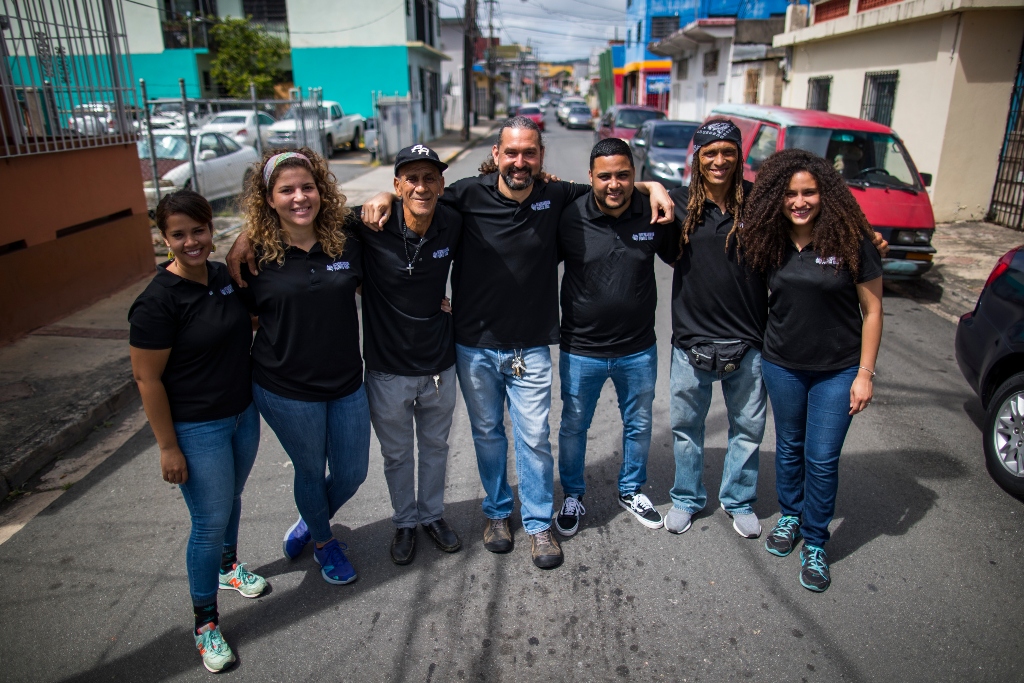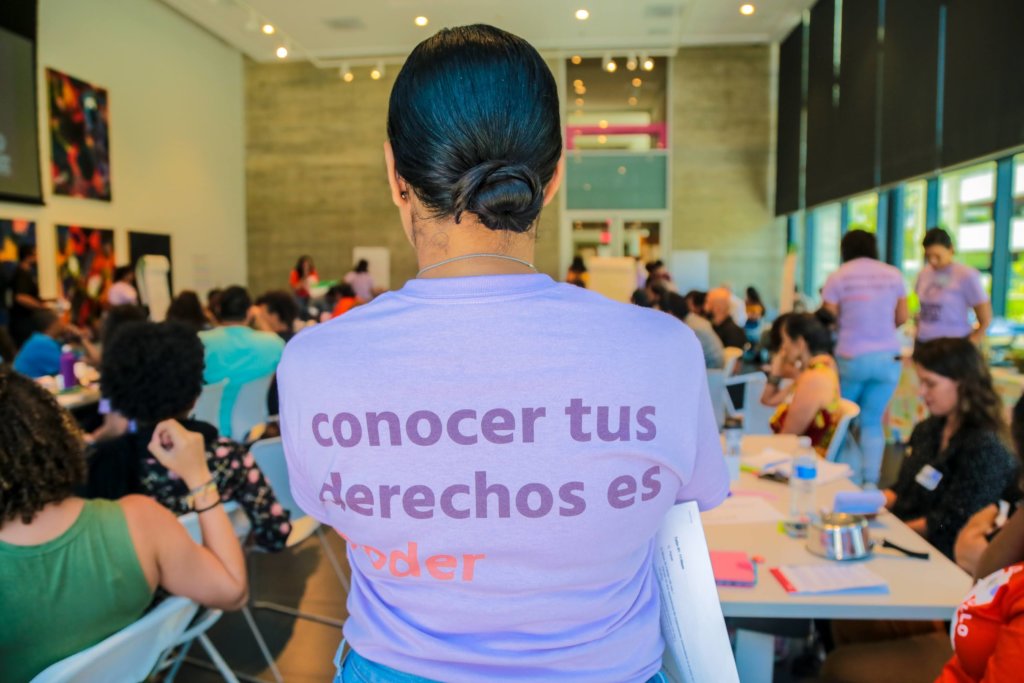Reconstructing homes, defending rights, and reviving the arts are all part of Puerto Rico’s recovery after Hurricane Maria. See how the response is offering glimmers of hope for the island’s future.
Sept. 20, 2017 was a turning point in Puerto Rico’s history. Hurricane Maria, one of the most devastating storms in United States history, hit the island. And its impact is still felt today. The Category 4 storm uprooted the lives and livelihoods of millions across the island; tens of thousands of homes were destroyed, and damage to critical infrastructure left most residents without power or water for months.
But stressful situations can spark innovation, and tumultuous times can bring a wave of solidarity. Four years after Hurricane Maria, these eight organizations, fueled by generous people around the world who gave to the Puerto Rico & Caribbean Hurricane Relief Fund, illustrate that. Here’s how they’re rebuilding the island’s foundation:
 Photo: La Maraña
Photo: La Maraña
After Hurricane Maria made landfall in Puerto Rico, Iris lost her house and all her belongings but received no government support. La Maraña hosted a participatory design workshop in collaboration with Iris’ family, the local community, and architects to plan for her new home. By 2019, La Maraña was able to rebuild her home, and together they celebrated with a delicious home-cooked meal Iris prepared herself!
 Photo: IsraAid
Photo: IsraAid
Barrio Real, a rural community located in Patillas, lost access to power and clean water after Hurricane Maria. The island-wide power outages disrupted the community’s water filtration system, leaving residents without a reliable source of safe drinking water. With the help of the Inter-American University of Puerto Rico and El Real Water Committee, IsraAID constructed a slow-sand gravity-based filtration system and secured clean drinking water for more than 1,000 residents.
 Photo: Craft Emergency Relief Fund, Inc
Photo: Craft Emergency Relief Fund, Inc
Arts and culture define puertorriqueñidad (Puerto Rican identity) and are a vital component of recovery. Many artists already faced economic hardships, and the challenges Hurricane Maria brought made them even worse. Craft Emergency Relief Fund (CERF+) provided emergency grants to artists like Carlos Rivera, a woodcarver from Orocovis. He used the grant to replace tools that were destroyed in Hurricane Maria. Since 2017, CERF+ has provided nearly $700,000 in grant assistance and donated equipment and materials to 396 artists across the island.
 Photo: Nuestra Escuela
Photo: Nuestra Escuela
Nuestra Escuela is an organization rooted in love, and their school is a place where students can realize their dreams. After Hurricane Maria, families faced unprecedented challenges, and Nuestra Escuela was determined to create a reliable space for them during emergencies. They transformed their cafeteria into a solar-powered first response center to provide meals, electricity, and satellite communications to the Caguas community when other storms or disasters hit.
 Photo: Taller Salud
Photo: Taller Salud
Miliam, the mother of two young girls, lost her home to Hurricane Maria. But she still managed to provide aid to others in her predominantly Afro-Caribbean community, Loiza. Most of Loiza is in a FEMA-designated flood zone, and the median household income is $7,000 less than the median for the rest of the island. One of the longest-running feminist organizations in Puerto Rico, Taller Salud, recognized the importance of supporting women like Miliam. They set a goal to reconstruct the homes of 10 women leaders in Loiza, and thanks to generous donations, they surpassed their goal and provided safe homes for 18 women leaders.
 Photo: Intercambios Puerto Rico
Photo: Intercambios Puerto Rico
Although the entire island was reeling from the impact of Hurricane Maria, people experiencing homelessness, drug addictions, and sex work were the hardest hit. Long-standing prejudices against these communities have meant their needs are neglected in recovery efforts. But by providing access to medical services and life-saving harm reduction services—from mobile clinics to syringe exchange programs—Intercambios Puerto Rico has improved the livelihood of these communities.
 Photo: Ayuda Legal Puerto Rico
Photo: Ayuda Legal Puerto Rico
As disasters continue to impact communities across Puerto Rico, Ayuda Legal Puerto Rico is providing free legal education, advocacy, and support to low-income individuals who are affected. Puerto Rico’s history of informal construction has prevented tens of thousands of residents from gaining access to federal aid. With help from pro bono attorneys, Ayuda Legal’s disaster legal aid initiatives have helped hundreds of families on their road to recovery.
 Photo: G-8, Grupo de las Ocho Comunidades Aledañas al Caño Martín Peña
Photo: G-8, Grupo de las Ocho Comunidades Aledañas al Caño Martín Peña
Nilda proudly stands next to her new, disaster-resilient home—she’s one of 114 participants in G-8’s Techos para el Caño (Roofs for the Caño) program. Their multi-tiered revitalization plan supported various home rebuild projects and helped relocate more than 600 displaced families. Members of the Caño Martín Peña community were involved throughout the entire process. Many have been inspired to offer their support as volunteers, continuing the recovery.
It’s been four years since the storm hit, and our partners’ long-term work for Hurricane Maria recovery continues. Although the Puerto Rico & Caribbean Hurricane Relief Fund is now closed, our efforts don’t end here. We remain committed to fueling critical community-led relief and recovery efforts in Puerto Rico and beyond.
Learn more about GlobalGiving’s ongoing community-led disaster response work across the world.
Featured Photo: Recovery of Puerto Rico through Youth Leadership by Jovenes de Puerto Rico en Riesgo, Inc.Find exactly what you're looking for in our Learn Library by searching for specific words or phrases related to the content you need.